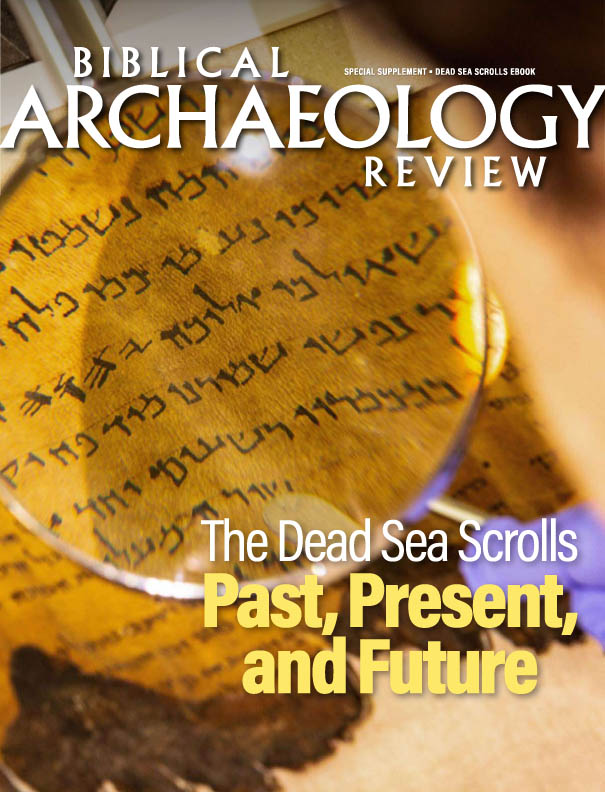
At the site of Khirbet Qumran (pictured here), near where the Dead Sea Scrolls were found, archaeologists uncovered two mysterious graves with jar burials. Containing traces of date honey, the intact jars might reflect the religious beliefs of the community that lived there around the turn of the era. Photo by Megan Sauter.
At Khirbet Qumran, the ancient settlement associated with the discovery of the Dead Sea Scrolls, excavations uncovered a seemingly illogical couple of graves. Among ordinary graves that contained human burials belonging to many of Qumran’s ancient inhabitants, there were at least two with no human remains. Instead, these two graves, located just east of the main settlement, contained intact jars with date honey residue: five jars in one grave, and ten in the other.
The cemetery at Khirbet Qumran is dotted with heaps of collected stones that mark individual graves—arranged in parallel rows and counting about 1,200 in total. Those graves that have been excavated so far belong to a common type consisting of a vertical shaft (2–6 ft. deep) and a burial space hewn into one of the long sides at the bottom of the shaft. Finding grave goods intended as offerings for the deceased is quite common in archaeology, but in this instance, the vessels were the only thing archaeologists found. Scholars have proposed several theories to explain these jar burials, but none has proved entirely convincing.
In the Fall 2023 issue of Biblical Archaeology Review, Dennis Mizzi of the University of Malta takes a fresh look at the evidence. In his article “Were Temple Offerings Buried at Qumran?” Mizzi reexamines archaeological reports and considers all the relevant textual sources to see what these jar burials can reveal about the religious beliefs of the people who lived at Khirbet Qumran and most likely deposited the mysterious vessels. Mizzi, who has published extensively on early Judaism and the Dead Sea Scrolls, thinks previous explanations are inadequate.

Earlier scholarship on the jar burials from Khirbet Qumran considered issues of ritual purity and concerns about physical contamination to argue that the vessels may have become ritually impure or that they were buried to prevent scavengers and pests from contaminating the sweet and enticing content. Mizzi explains why these theories are problematic, suggesting instead a different interpretation—one that explains why the jars were buried whole and with such care.
According to Mizzi, the jars “were set apart and buried because they were deemed sacred and thus proscribed from use.” Specifically, Mizzi describes a situation in which the date honey in the jars was set aside as a tithe or firstfruits offerings to be transported to the Temple in Jerusalem. But because the Qumran community perhaps came to view the contemporary religious system or its guarantors at the Temple as corrupt and impure, the leaders at Khirbet Qumran decided to not deliver the Temple offerings they had collected. Instead, they ceremoniously buried the jars at the site as a ritual deposit.
To fully explore the historical evidence and to consider every clue and argument, read Dennis Mizzi’s article “Were Temple Offerings Buried at Qumran?” published in the Fall 2023 issue of Biblical Archaeology Review.
Read more in Bible History Daily:
The post Baffling Burials appeared first on Biblical Archaeology Society.

0 Commentaires